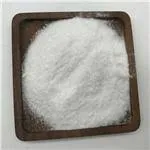Cationic Polymers Used in Water Treatment
Water treatment is an essential process for ensuring the safety of drinking water and maintaining environmental health. With increasing pollution levels, the need for effective water treatment solutions has never been more pressing. Among the various agents used in water treatment, cationic polymers have gained prominence due to their effectiveness in coagulation and flocculation processes. This article explores the role, benefits, and applications of cationic polymers in water treatment.
Cationic polymers are positively charged macromolecules that interact with negatively charged particles, such as suspended solids, organic matter, and bacteria. This interaction facilitates the aggregation of these particles, forming larger clusters or flocs that can be easily removed from water through sedimentation or filtration. The effectiveness of cationic polymers in water treatment primarily originates from their unique chemical structure, which allows them to effectively bridge between particles, enhancing their removal from water.
One of the key advantages of cationic polymers is their high efficiency in low concentrations. When added to water, these polymers can dramatically reduce turbidity levels, which is crucial for producing clear and safe drinking water. Additionally, cationic polymers have been shown to reduce the presence of pathogens, thus contributing to improved public health standards.
The application of cationic polymers in water treatment spans various sectors. They are widely used in municipal water treatment plants to improve the quality of drinking water by reducing organic compounds and pathogens. Moreover, they play a crucial role in wastewater treatment, especially in industrial processes where high levels of suspended solids and pollutants are present. In these situations, cationic polymers can help to coagulate and remove pollutants effectively, ensuring that the treated water meets regulatory standards before being discharged into the environment.
cationic polymer used in water treatment

Cationic polymers are also utilized in the treatment of sludge, which is a byproduct of wastewater treatment processes. By enhancing the dewatering of sludge, these polymers help reduce the volume of waste generated and provide opportunities for the recovery of valuable resources, such as nutrients and water.
Another significant benefit of cationic polymers is their versatility. They can be synthesized in various forms, including homopolymers, copolymers, and branched structures, allowing for tailored properties suited to specific applications. This customization can improve their performance in a particular water treatment scenario, making them indispensable tools for water treatment professionals.
Despite their advantages, the use of cationic polymers is not without challenges. One concern is the potential for residual chemicals in treated water, which can sometimes affect ecosystems when excess polymers are introduced into the environment. Therefore, it is essential to optimize dosages and treatment processes to minimize any adverse effects. Additionally, there is ongoing research to develop more biodegradable and environmentally friendly cationic polymers, which would further enhance their sustainability profile.
In conclusion, cationic polymers represent a vital component of modern water treatment processes. Their ability to efficiently remove contaminants, improve water clarity, and reduce pathogen levels underscores their importance in safeguarding public health and protecting the environment. As water scarcity and pollution continue to pose challenges globally, the development and application of cationic polymers will likely evolve, offering innovative solutions for effective water treatment. Future research efforts should focus on enhancing the environmental sustainability of these materials to ensure that they complement broader environmental goals while continuing to deliver essential benefits in water treatment practices.

